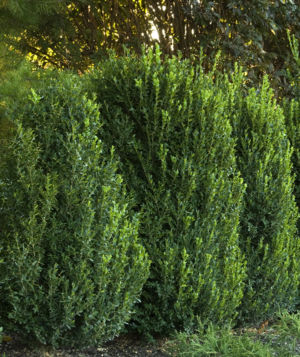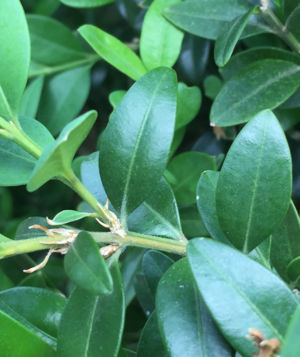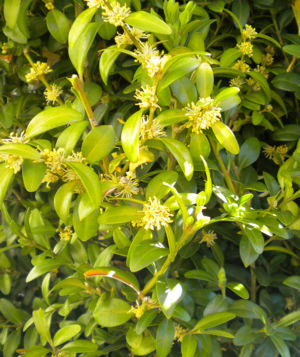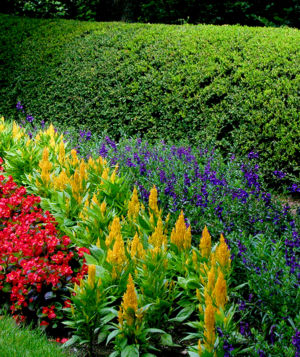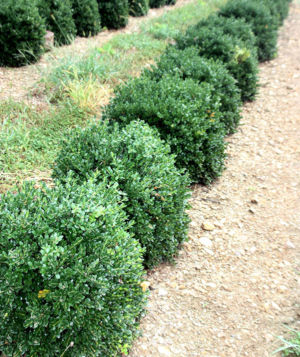Boxwood – Buxus sempervirens
Description
General: Boxwood is an evergreen shrub that is generally rounded to broad-rounded in shape, and can vary in size based on the variety.
Leaves: Dark glossy green on top of the leaf surface and yellowish-green on the underside of the leaf. Leaves may bronze in the winter as the plant dries out.
Flowers: Inconspicuous, pale green to white in April or May
Attributes: Boxwoods tolerance of heavy pruning make it an excellent choice for a topiary or in formal settings with uniform hedges. With a variety of sizes and shapes, boxwood has numerous uses in the landscape as an accent plant, or in mass as a hedge or privacy screen.
Culture
Hardiness: Zones 5- 8
Growing Conditions: Prefers a moist, well-drained soil in a sunny to partially shady location. Protect from heavy drying winds to avoid bronzing of foliage
Maintenance: Can be considered a high maintenace plant if you are going for a formal look. We sheer some of our boxwood up to three times a growing season, but other boxwood on the property we may only prune them once every other year or as needed. Disease and insects can be a problem if the plants are stressed. Heavy pruning or poor drainage can lead to fungal or insect issues. Boxwood leafminer, boxwood psyllid and boxwood mite are three insects that can cause issues with the foliage. Volutella or Boxwood blight are two fungi that can damage and kill plants.
Transplanting: With the plant adaquatly watered and the appropriate amout of roots, transplanting should not be an issue. If possible avoid the high stress of summer, or late in the fall before the plant is dormant.
Propagation: Cutting or seed
Our Experience
Experience at Great Hill
Generally we do not have many issues. We do apply preventative fungicides and insecticides seasonally to keep our many hedges healthy. We have had some extended branches break under snow and ice, but boxwood is overall quite hardy in our zone.
Historical Winter Data
Winter 2016-17: Some minor twig breaks, and a couple spots of winter injury where plants were exposed to winds.
Winter 2017-18: Some minor twig breaks under heavy snow

